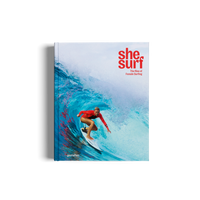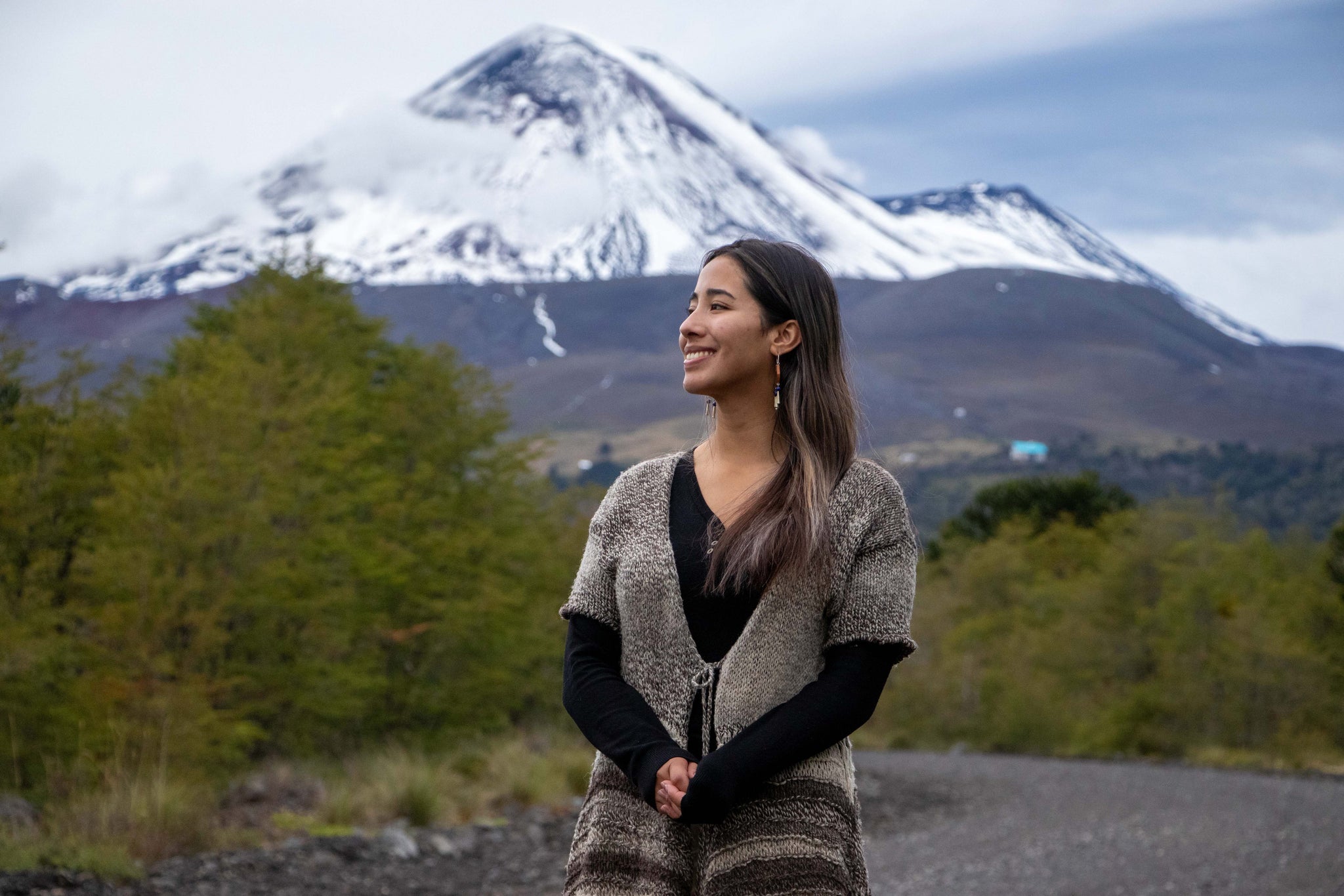
05/2020 Escape
In 2019, the World Surf League became the first American-based global sports organization to implement equal pay for male and female athletes. It was a historic move for a sport in which gender discrimination had been so radically entrenched. For most of the competitive surfing’s history, women were treated like sometimes pretty, but mostly irrelevant, sideshows. Parallel to surfing as a spiritual outlet and art form, there has always been a competitive element to wave riding in societies with developed aquatic cultures. Ancient Polynesians rode waves for centuries before Europeans witnessed surfing, and in both Hawai‘i and Tahiti, competitive surf gatherings were common, as was gambling on those events.
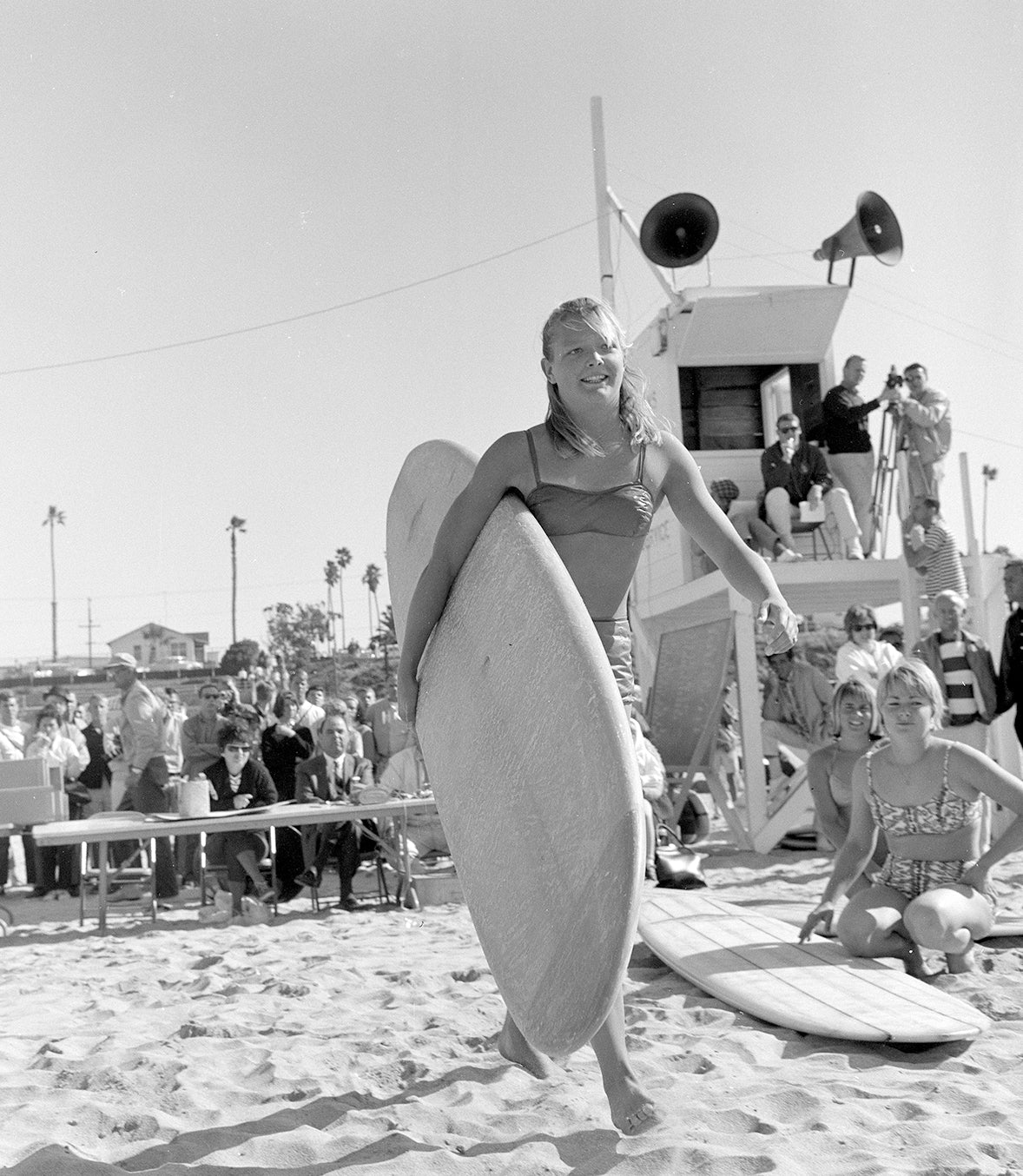
1966 world champ Joyce Hoffman dominated competitive surfing in her era. (Photo: Ron Church, She Surf)
Professionalized surfing as a distinctly Western tradition arose in the 1960s and birthed in the 1970s. Many surfers and contest organizers had their hands in what contest surfing should be. However, the deeply subjective nature of what defines “good” surfing leaves ample room for debate about how contests are structured and judged.
Historians agree that the first official world champions—Australians Phyllis O’Donnell and Bernard “Midget” Farrelly—were crowned in 1964, the same year the International Surfing Association (ISA) was formed. The winner-takes-all accolades event on Sydney’s Manly Beach is considered the inaugural World Championships.
The women’s results of the Peruvian 1965 World Championship were not even mentioned in Surfer Magazine that year
“World Championships” was somewhat of a misnomer, however, especially for the women’s division. The field of competition was small, and Linda Benson was the only international entrant. On the men’s side, “only 13 of the 200 entrants were non-Australians,” documents Matt Warshaw in The History of Surfing. Still, the event, sponsored by Australia’s largest petroleum company, was attended by tens of thousands and received ample media coverage—including a live broadcast of the finals, a first.
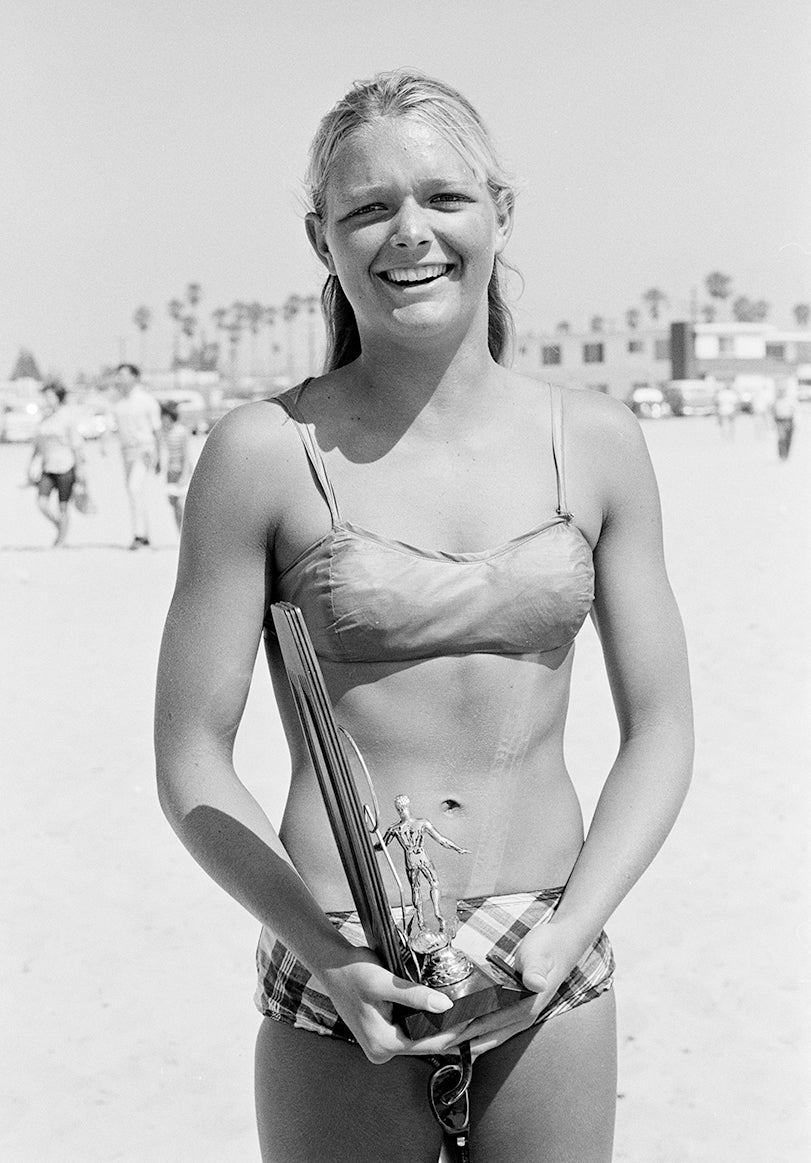
World champion Joyce Hoffman graced the cover of Life and the pages of Vogue as one of surfing’s early stars. (Photo: Ron Church, She Surf)
The legitimization of an official World Championship allowed the birth of commercial surf stars. Joyce Hoffman, who won in 1966, was a dynamic, powerful, and stylish surfer who garnered big-name sponsors and was even featured on the cover of Life. Hoffman was the first woman to ride the cataclysmic waves of the Pipeline, and she dominated surfing through the 1960s with an obsessive, competitive drive. Surfers of her era were considered wild and free-spirited, not necessarily serious athletes. Hoffman’s commitment, a clean-cut presentation, and the calculated approach made her an aspirational icon for the sport.
“Waves treat everyone equally; men and women are on the same terms as far as nature is concerned”
While some mainstream American publications became champions of women’s surfing and Joyce Hoffman in particular, women were frequently excluded from the male-dominated surf media. The women’s results of the Peruvian 1965 World Championship were not even mentioned in Surfer Magazine that year.
This lack of recognition wouldn’t deter dedicated water women, as it hadn’t in the past. Prior to the 1964 World Championship, there were events like the Makaha International Surfing Championship that crowned unofficial world champions. One of these women was Californian surfer Ethel Harrison, who moved to Honolulu and married Hawaiian Joe Kukea in 1935. Ethel Kukea went on to victory at the Makaha International Surfing Championship, in both 1955 and 1956, the first two years the competition included a women’s division. When she won in 1955, she was 41-years-old and a working mother of three.
In 1958, Californian Marge Calhoun, a decorated swimmer, diver, and stuntwoman, went on an epic adventure to the Hawaiian Islands with her surfing companion Eve Fletcher, a Disney animator by trade. They lived in a panel van for a month and charged waves from Hale‘iwa to Sunset on O‘ahu’s North Shore. That year, Calhoun won the prestigious Makaha event at age 32. She and her daughters, Candy and Robin Calhoun, also talented surfers, were blonde, statuesque, and known for epitomizing the sunny “surfer girl” style of their generations.
On at least one occasion, after winning a heat, Haslock was asked by a ruthless photographer to hand her surfboard off to a more glamorous beachgoer who was then photographed with Haslock’s board for the glossy media depiction of women’s surfing
Later, in 1961, Calhoun was a cofounder of the amateur U.S. Surfing Association and its first and sole female judge. Another Californian, Linda Benson took the Makaha title in 1959. She was 15 at the time. The same year, Benson became the first woman to surf O‘ahu’s big-wave mecca Waimea Bay. She recalled her experience to Liquid Salt magazine:
“I remember that day. They were calling it 18 feet (5.5 meters). We stood on the cliff just watching the waves and kicking the dirt, trying to decide whether to go out or not. There was a small guy from Windansea named David Cheney. He had the smallest board, a 10-foot (3-meter) gun, and he let me borrow it. I waited for a lull and my heart was pounding. I didn’t think about whether or not I was going to be the first girl. I just went and did it.”
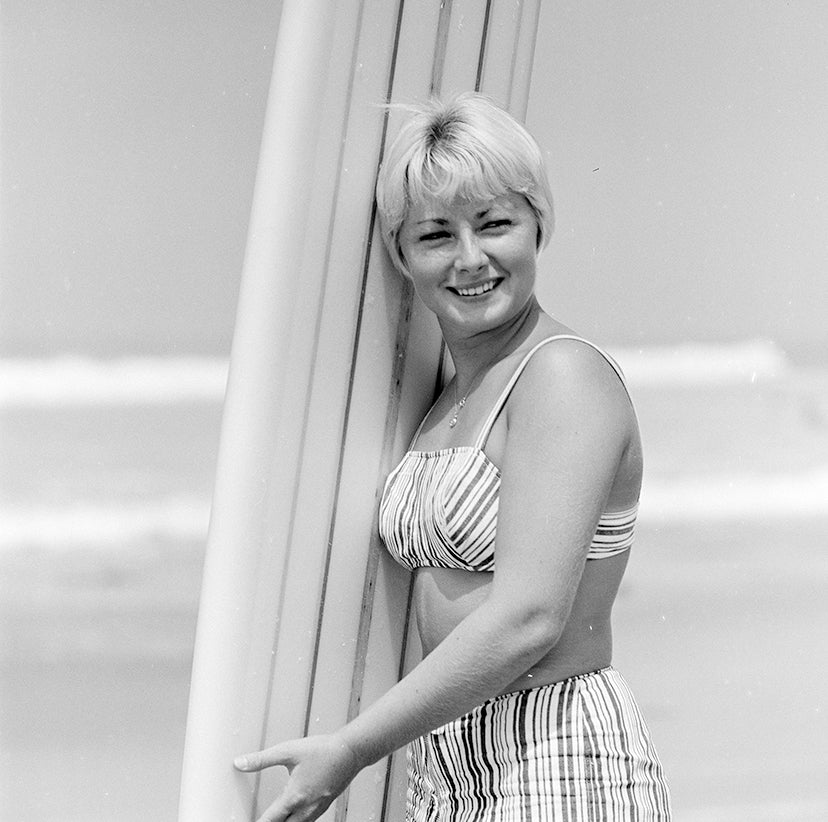
As the first woman to ride Waimea Bay, Linda Benson helped nudge women’s surfing into heavier waters. (Photo: Ron Church, She Surf)
In England, women’s contest surfing can be traced to one dominant figure: Gwyn Haslock. As the sole female competitor, she entered the British National Championships in 1966—and inspired the establishment of a Ladies National Championship in 1969, which she won. Haslock went on to victory at four consecutive British Ladies Surfing Championships (1970-1974) and the English Surfing Championships as late as 1990. On at least one occasion, after winning a heat, Haslock was asked by a ruthless photographer to hand her surfboard off to a more glamorous beachgoer who was then photographed with Haslock’s board for the glossy media depiction of women’s surfing.
Despite their achievements, early pioneers were not recognized for their accomplishments to the same extent that the men were. The monetization of men’s surfing made this sexism easily quantifiable.
The first surf contest to offer prize money was the Tom Morey Invitational, held in Ventura in 1965. It offered a $5,000 (€4,500) prize purse: $2,000 (€1,800) for the winner. No women were invited. As detailed in The Encyclopedia of Surfing: “The men had over a dozen money events in 1975; the women had three. Michael Peterson got $1,500 (€1,400) for taking Bells, women’s division winner Gail Couper won $200 (€180).” Male surfers were not making a generous living by any means, in fact, most were borrowing money to get to the events, but only a handful of women were financially compensated at all.
“In tennis, women can say they won’t play unless they get more money, and they get it. In surfing, if we tried that, the sponsors would say ‘See ya later!’”
In 1975, in response to subpar prize purses, a small group—including professional surfers Jericho Poppler, Mary Setterholm, and Mary Lou Drummy—founded the Women’s International Surfing Association (WISA) to address the sport’s gender inequities, because, as Setterholm asserted: “Waves treat everyone equally; men and women are on the same terms as far as nature is concerned.” WISA held stand-alone events, like the Hang Ten Women’s International Professional Surfing Championships, which boasted a $3,000 (€2,750) prize purse. But the event had its challenges. Namely male surfers who refused to clear the line-up in blatant disrespect. Competitors were forced to fight for waves with non-competitors and maneuver around a crowded Malibu line-up to compete.
The following year, in a devastating event indicative of the gender-power dynamics of the culture, one of the cofounders of WISA was sexually assaulted by a group of surfers. She fled the sport and the state of California. This was a potent reminder that even though women were making strides, the reign of patriarchal masculinity, wherein domination is power, was still oppressively present, on land and in the water.

Surf historians note that surfing in the 1960s was counterculture and, as a result, both women and men were considered free-spirit thinkers who refused to conform to traditional family and cultural norms. (Photo: Ming Nomchong, She Surf)
As men’s contests grew in size and scale into the eighties, women’s events were still an afterthought. In Girl in the Curl: a Century of Women in Surfing, Andrea Gabbard describes one Australian contest in which, “the first place woman took home $1,500 (€1,400), the man $35,000 (€32,000). The best surf was reserved for the men. Often, while women were out competing in their final surfing heats, all eyes in the crowd—and the media—were focused on the women competing in the bikini contest on the beach. Some pro-women joked half-heartedly that it would be more profitable to win the bikini contest and receive a lucrative modeling contract.”
Margo Oberg was one of the first women to take home prize money from a surfing contest: $150 (€140) at the Santa Cruz Pro-Am in 1969. Born in Pennsylvania and transplanted to Kauai, Oberg cut her teeth surfing against boys in the club contests and emerged as a power surfer and fierce competitor. She went on to win four world titles (usurping Joyce Hoffman). Her low-center-of-gravity stance and aggressive style inspired many male journalists of the day to compare her surfing to the men’s—the “highest” reigning compliment for female surfers for most of the 20th-century. Oberg capitalized on the “shortboard revolution” of the 1960s, which swept the surfing world with smaller, lighter boards. While Joyce Hoffman was the icon of women’s longboard surfing, Oberg became the gold standard for high-performance competitive short boarding.

Oberg was a catalyst for progressing women’s surfing both competitively and also into heavier water. When asked in a 1979 profile by Surfing Magazine about the financial progression of her sport, she said: “In tennis, women can say they won’t play unless they get more money, and they get it. In surfing, if we tried that, the sponsors would say ‘See ya later!’”
As many women of her era did, Oberg recognized the vast athletic and commercial potential of female surfers, despite experiencing the chauvinistic attitudes of dominant surf culture that held back the sport. She was diplomatic and remained more focused on competition than paying the personal and professional price for attempting to change the status quo.
Nevertheless, these bold women pushed boundaries and laid the foundations for performance, athleticism, and marketability of female surfers. Even if never fairly compensated or rightfully recognized in their time, they were pioneers of the sport and catalysts for the boom that followed in subsequent decades. When the World Surf League announced their recent decision to award equal prize money to male and female athletes, CEO Sophie Goldschmidt said that the organization wanted to be on “the forefront of equality, starting on the waves” and thanked “the many advocates who have worked for decades to help advance women’s surfing.”
From fighting for equal pay and recognition to contemporary surfers, explore the world of female surfing through She Surf.





